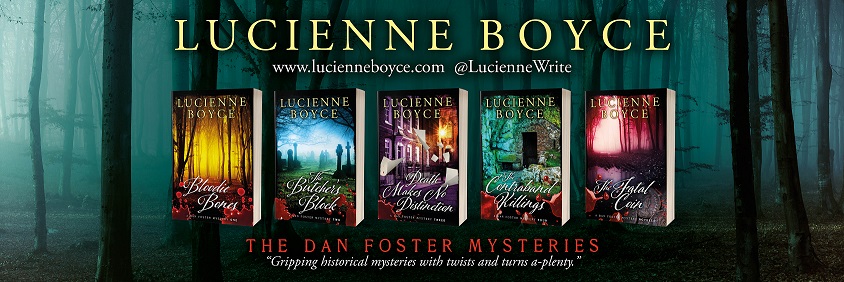I’ve always been interested in the way history reflects the age in which it is written. I recently came across a striking example of this in M R Brailsford’s book Quaker Women 1650-1690, which was published in 1915. When I started reading the book I didn’t know who M R Brailsford was, but it wasn’t long before I realised that her book was profoundly influenced by the stirring events of the women’s suffrage campaign in the years before the First World War.
For
example, Brailsford expresses “a reluctant sympathy” for preachers confronted
by women like Elizabeth Hooton who spoke out in church. Brailsford wrote that a
preacher’s meetings, like those of “Cabinet Ministers of later date, were
subject to interruption without warning, and his most eloquent discourses
broken at any moment by the sudden shouting of home truths from a member of his
congregation”. Heckling government ministers was one of the tactics used by the
militant Women’s Social and Political Union (WSPU) from the start of its
militant campaign in 1903 up to its cessation in 1914.
It’s
a comparison Brailsford draws again when she mentions Hooton’s attempts to
influence MPs on behalf of persecuted Quakers. She comments that Hooton’s “free
access to the House…makes startling reading in the light of recent events”. The
militants’ suffrage deputations to the House of Commons in the 1900s were notorious
for the brutality with which the women were treated by police and bystanders as
the Liberal government stubbornly refused to allow them entry to the House to
deliver their petitions.
 |
| ...the government refused to allow women entry to the House of Commons |
Many
respectable women were sentenced to terms of imprisonment because of their
Quakerism. “As in later days,” remarks Brailsford, “the commitment of a delicately
nurtured woman to prison threw a flood of light upon prison methods and
accommodation”. In the twentieth century, the influx of well-off and
influential suffragettes into British prisons also led to the raising of
awkward questions about prison conditions. The Quaker prisoners’ “hunger
strike, which was frequently practised by both men and women prisoners, seems
to complete their startling resemblance to the twentieth-century sufferers for
an ideal.” There’s even an oblique reference to suffrage campaigners’ refusal
to pay taxes for as long as women remained voteless on the basis of the
principle “no taxation without representation” – an offence for which many
suffered the distraint of their goods. Similarly, writes Brailsford, Quakers withheld
tithes, arguing “that they received no benefit from the parish priest’s
ministrations, and should not therefore be required to pay for them – a principle
beloved in theory by the English Constitution.”
By
now, of course, it’s abundantly clear that M R Brailsford had strong suffrage
sympathies. But who was she? And had she any connection with the journalist H N
Brailsford? Henry Noel Brailsford
(1873–1958), who was prominent in the Men’s League for Women’s Suffrage, was prompted by his militant
suffragette wife Jane (1874–1937) to establish the
Conciliation Committee in 1909. This Parliamentary Committee was set up to
devise a woman’s suffrage bill that would be acceptable to all political
parties. In the event it failed and none of the bills it proposed went onto the
statute book. While it was active, however, the militant Women's Social and Political Union (WSPU) called a truce to militancy,
and for a few heady months during this time many campaigners believed that a women’s suffrage
act was about to be passed. In a speech in the Albert Hall in June 1911, WSPU
leader Christabel Pankhurst declared, “We have
in any event got an assurance which will place in our hands before the next
general election the right to vote.” The WSPU’s disappointment when the last of
the bills failed was bitter, and led to an outbreak of suffragette militancy on
an unprecedented scale.
A
little digging around confirmed that Mabel Richmond Brailsford was H N
Brailsford’s sister. I was beginning to think that I’d never find out anything
more about her when to my delight I stumbled on A Wartime Journal 1941 to 1943 published by Amersham Museum, and
based on her diary, which is held in their archives. Most of the following
biographical details come from this book. She was born in 1875 in Yorkshire.
Her father was a Methodist preacher, and she was educated at a Methodist girls’
boarding school in Lancashire. During the First World War
she did clerical work for the Voluntary Aid Detachment in Ilfracombe. Her books
include a biography of William Penn, and after moving to Amersham with her mother in 1921 she
often attended Quaker meetings at the Amersham Meeting House. She was also
active in the Methodist Church. She never married. In 1952 her brother Henry went to live with her.
He died in 1958, and Mabel died in 1970.
M R Brailsford's book Quaker Women reminds us that women have always been active in public affairs, and often at great personal cost.
M R Brailsford's book Quaker Women reminds us that women have always been active in public affairs, and often at great personal cost.
M R
Brailsford’s war time diary, which includes more biographical information about
her, is available from Amersham Museum price £10. For more details see http://amershammuseum.org/new-book-life-1940s/
For
information about H N Brailsford there’s a biography by F M Leventhal, The Last
Dissenter: H N Brailsford and His World,
published by Oxford University Press.
Quaker Women 1650-1690 by M R Brailsford (London: Duckworth & Co, 1915)
is available as a free download at https://archive.org/details/quakerwomen1650100brai

Comments
Post a Comment